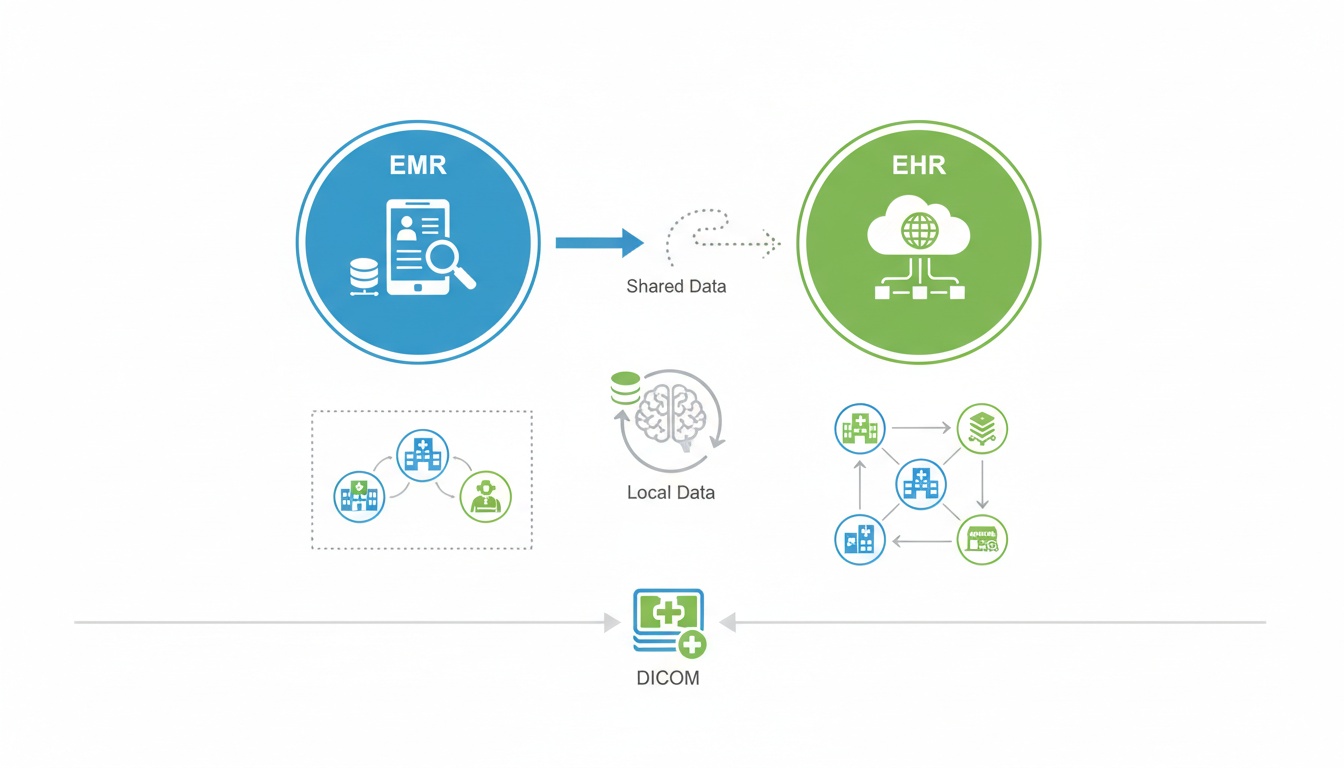
In recent years, there has been a move away from paper medical records to electronic health records (EHRs), which are maintained in digital format. EHRs offer many advantages over traditional paper-based systems, including storing and sharing medical data more easily and efficiently.
However, there needs to be some clarification about the terminology used to describe different electronic medical records (EMRs) types. In this blog post, we will look at the differences between EHRs and EMRs, and discuss the implications for medical data storage and sharing.
Typically, EHR systems are more comprehensive than EMRs. They store information about a patient's medical record, including past and current health history, lab results, medications, and treatment plans. In contrast, EMRs often just hold information on the most recent visit or encounter with a healthcare provider and may not even include complete medical histories.
One of the key benefits of electronic records is that they allow medical data to be easily shared among healthcare providers.
However, confusion around the terminology used when referring to different types of records can cause problems when coordinating care or sharing patient information.
Accurately understanding the difference between EHRs and EMRs is therefore essential for medical professionals looking to improve data storage and sharing in their field.
One major challenge is ensuring that data is accessible across different platforms and locations, as many healthcare providers now use cloud-based systems to store patient information.
Additionally, issues around privacy and security can arise when EHR vs EMR systems are used for storing sensitive medical data. To address these challenges effectively, it is essential for healthcare organizations to have a robust IT infrastructure that supports seamless integration between different record types.
This will help ensure that care teams can access all relevant patient information at any time, allowing them to deliver the best possible care.
 - Created by PostDICOM.jpg)
Many hospitals use EHR systems, which provide a more comprehensive record of a patient's health history.
However, some smaller clinics and physician practices may still rely on EMRs for storing medical data, as these are typically less resource-intensive than full EHR systems. Overall, the distinction between EHR and EMR systems is becoming increasingly blurred as many healthcare organizations are moving to hybrid models that combine different types of records in one system.
Thus, providers must stay up-to-date with the latest technology trends to ensure they can effectively use EHR vs EMR platforms in their work.
There is no definitive answer to this question, as different types of EHR vs EMR systems may be more or less suitable depending on the needs and resources of a particular healthcare organization.
In general, EHRs are generally considered to be more comprehensive than EMRs and therefore offer some clear advantages when it comes to managing patient data. Furthermore, as EHR systems become more widely adopted, there is likely to be increased pressure on healthcare providers to transition away from less robust EHR vs EMR platforms.
Thus, investing in an EHR system may be the best option for improving medical data storage and sharing processes.
To provide optimal patient care, doctors must have access to the most recent and accurate data possible. But patient information is frequently stored in silos among technologies that don't always get along.
Electronic health records (EHRs) are databases that keep medical records, such as doctors' notes and lab results, in text format. Medical photographs can be stored and accessed through picture archiving and communication systems (PACS).
When a doctor uses only an electronic health record (EHR) system or simply a picture archiving and communication system (PACS), that doctor only has access to a subset of the patient's health information. It's inefficient and time-consuming to access these resources independently. The patient's medical history must be considered when making a diagnosis; while crucial, medical imaging is only one part of the record.
The short answer is yes; an EHR system can interact with a PACS to provide clinicians with a complete picture of patient data.
For the most immediate benefit, businesses should consider the following five factors when deciding whether or not to integrate RIS/PACS and EHR technologies.
Consider the patient's perspective
Minimize disruption to the present care process
Prioritize standards compliance
Design for the best-of-breed solution architecture
Think of the Internet as a channel for connection
Not surprisingly, vendor posturing in the healthcare industry is a significant barrier to integration between the electronic medical record and the picture archiving and communication system (PACS/RIS). A vendor's "foot-in-the-door" in a healthcare delivery setting is viewed as strategically advantageous by the vendor.
Clinicians and administrators must understand that many vendors have the "capacity" tco provide seamless apps but may lack the "will" to do so due to their competitive position in the market.
Therefore, it is crucial that purchasing authorities foster a competitive environment in which the rules of engagement for winning a bid on a project include the selected vendor's willingness to facilitate the use of any options for specific applications within the EMR and/or PACS/RIS infrastructure.
If you are concerned about integrating an EHR or EMR system with a PACS without any technical hassles, PostDICOM is here to help you. We have a state-of-the-art Cloud PACS solution with a diagnostic DICOM viewer and medical image sharing features.


|
Cloud PACS and Online DICOM ViewerUpload DICOM images and clinical documents to PostDICOM servers. Store, view, collaborate, and share your medical imaging files. |